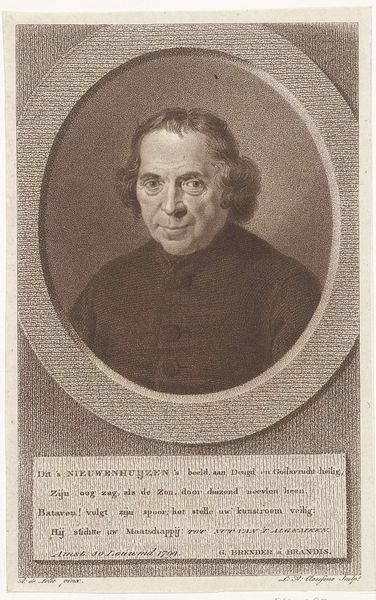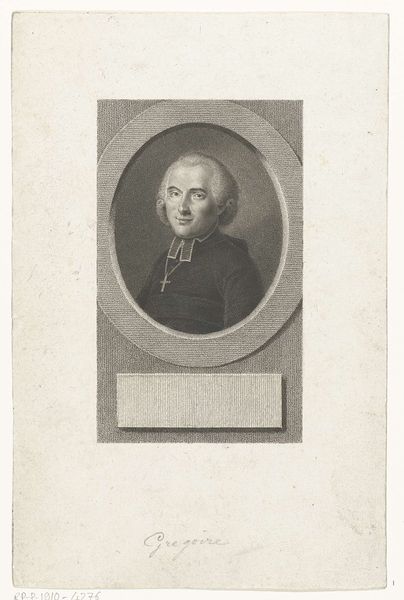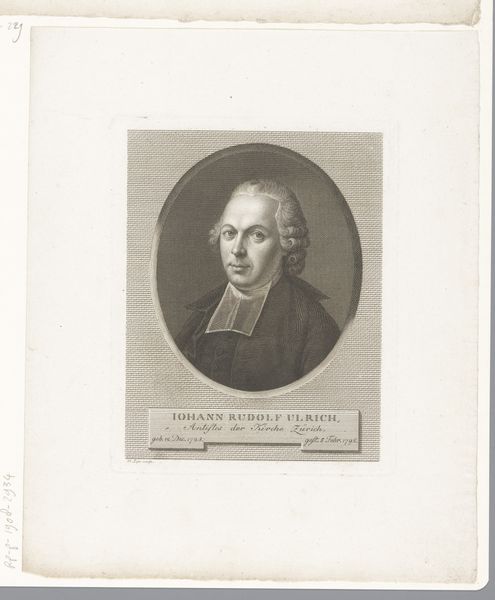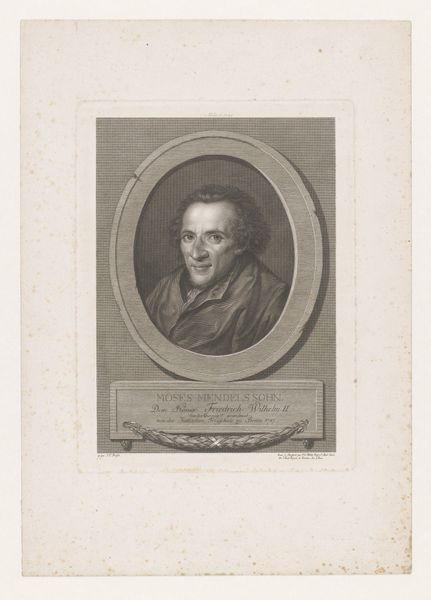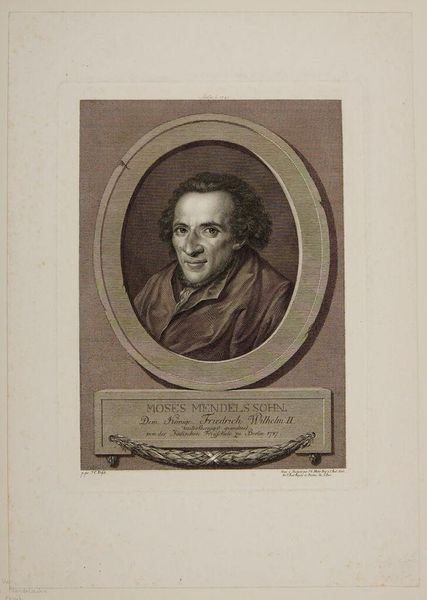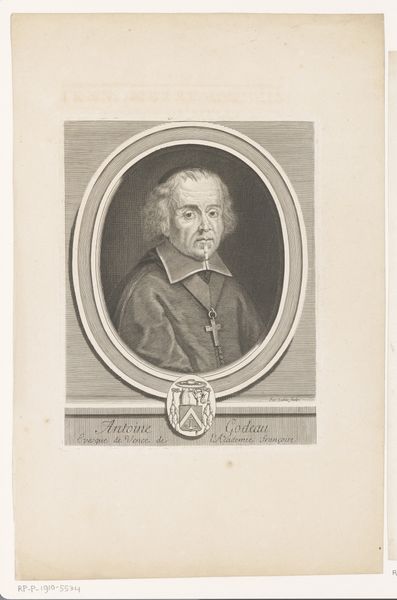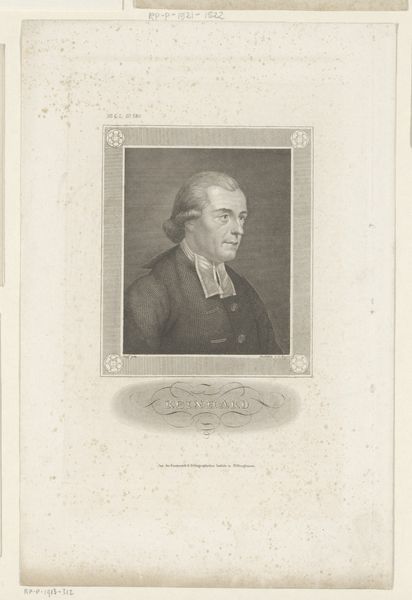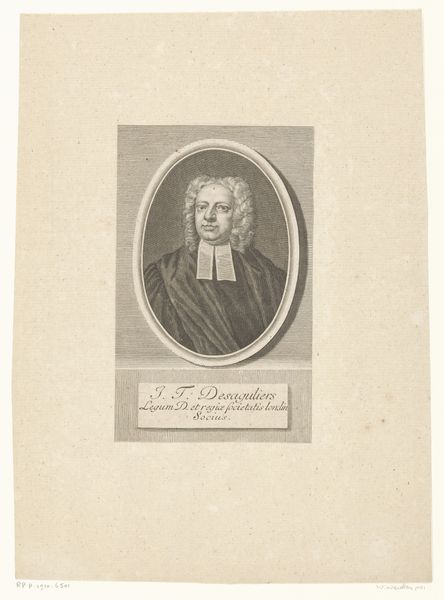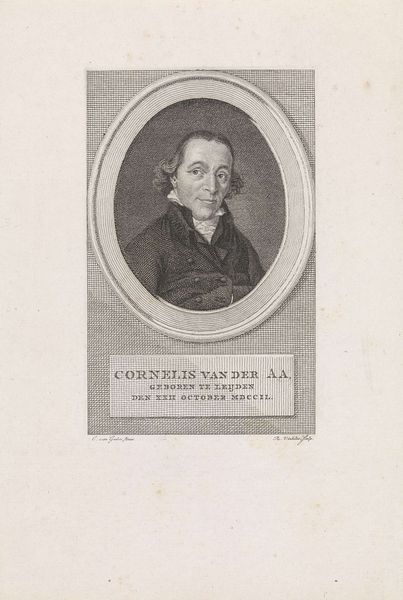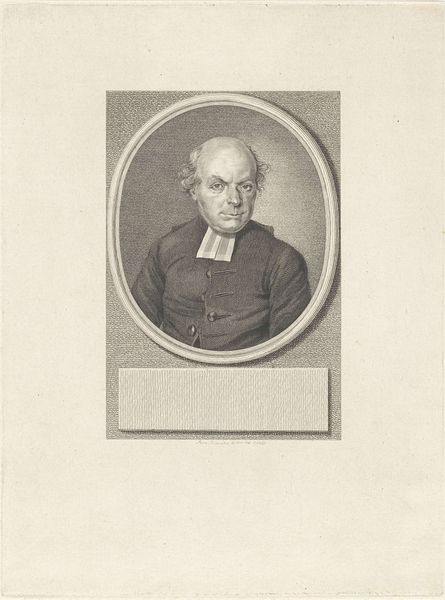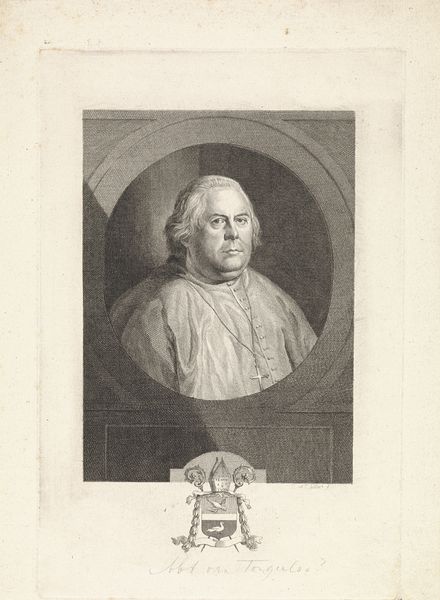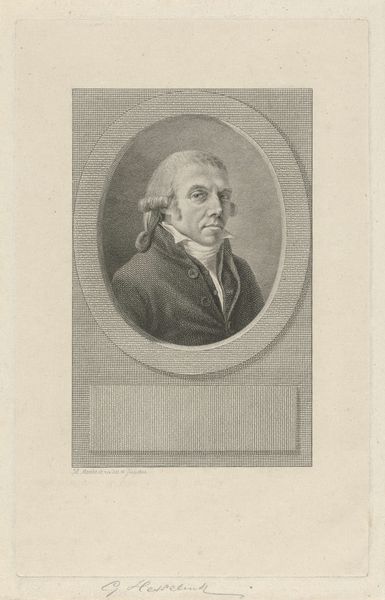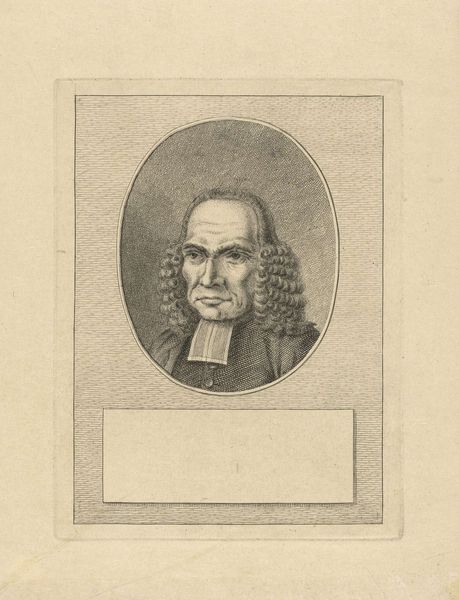
drawing, print, paper, engraving
#
portrait
#
drawing
#
neoclacissism
# print
#
paper
#
history-painting
#
engraving
Dimensions: height 243 mm, width 160 mm
Copyright: Rijks Museum: Open Domain
Curator: Looking at this engraving from after 1799, we see a depiction of Jan Nieuwenhuyzen, created by Lambertus Antonius Claessens. It’s a work that resonates with the aesthetics of neoclassicism. Editor: My immediate sense is of somber authority. There's something very contained about the subject, framed within that oval. It’s a face etched with, dare I say, disappointment? Curator: Well, Nieuwenhuyzen was a preacher, but he was also deeply involved in advocating for educational reform during a time of significant social and political upheaval. We see that activism reflected in his life through his involvement in various patriotic societies in Amsterdam during the Batavian Revolution. Editor: I’m intrigued by that oval frame. It’s not just a decorative element. It's creating a kind of icon, setting him apart, sanctifying him almost. Note how the text beneath feels like a devotional inscription. What does it say, exactly? Curator: It essentially praises Nieuwenhuyzen's virtues and commitment to enlightening his society, celebrating his role within the Maatschappij tot Nut van 't Algemeen, a society dedicated to public welfare. It's crucial to consider how these textual elements further solidified his image and message during that era. Editor: It underscores that symbolic weight. His gaze is unwavering, very direct for a portrait of that period. The somber clothing too…it’s less about fashion and more about a clear message of intellectual rigor, civic virtue, and possibly even dissent given the revolutionary context. Is that reading too much into it? Curator: Not at all. I think interpreting the choice of clothing as a signifier of his social and political positioning is apt, it emphasizes Nieuwenhuyzen's dedication to education and societal improvement. How would you relate all of this to the broader understanding of symbolic imagery and meaning? Editor: It points to the construction of a persona—using recognizable visual cues to communicate identity and allegiance. We have the dedicated intellectual, the somber revolutionary... all communicated economically. Thinking about cultural memory, these kinds of images helped solidify the stories people wanted to tell about themselves. Curator: Exactly. And considering the time—right after a failed revolution, after 1799—this piece becomes part of a larger visual language used to promote ideals during social change. Thank you for this enlightening overview of Claessens' work. Editor: The pleasure was all mine. The chance to interpret how portraits communicate more than mere appearances continues to fascinate me.
Comments
No comments
Be the first to comment and join the conversation on the ultimate creative platform.
